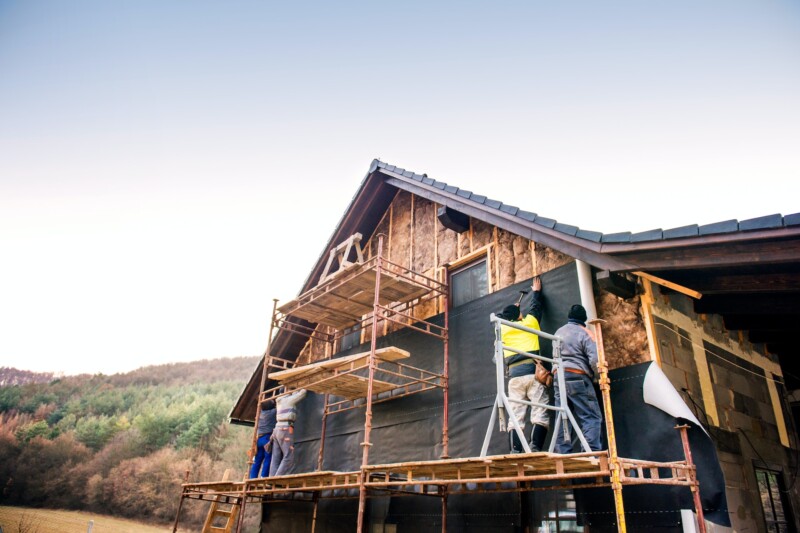A well-insulated thermal envelope is essential for energy-efficient building design, providing substantial benefits such as energy cost savings, enhanced occupant comfort, and environmental sustainability.
Ensuring proper insulation not only contributes to an energy-efficient structure but also bolsters compliance with the ever-evolving energy code standards. As homeowners and construction professionals strive to construct buildings that adhere to stringent energy codes, understanding and mastering thermal envelope insulation becomes increasingly significant.
In this detailed article, we will explore the importance of thermal envelope insulation in achieving energy code compliance, delve into a variety of insulation materials, and discuss how to choose the best-suited option for your building.
By grasping the function and impact of insulation on energy efficiency, you can make informed decisions that optimize building performance and secure code compliance.
The Function of Thermal Envelope Insulation in Energy Efficiency
The primary function of thermal envelope insulation is to minimize heat transfer between the interior and exterior of a building.
In essence, insulation helps maintain the desired indoor temperature by reducing heat loss during cold weather and preventing excessive heat gain during warmer months. This fundamental characteristic of insulation contributes to energy efficiency in the following ways:
1. Energy Cost Savings: Proper insulation reduces the demand for heating and cooling systems, leading to lower energy consumption and cost savings for both homeowners and building operators.
2. Enhanced Indoor Comfort: Insulation helps maintain consistent indoor temperatures throughout a building, eliminating cold spots, drafts, and heat fluctuations that can cause discomfort for occupants.
3. Environmental Sustainability: Buildings that use energy efficiently contribute to reduced greenhouse gas emissions, thus promoting environmental sustainability and adhering to energy code standards.
Types of Insulation Materials
There are various insulation materials available in the market, each with its unique properties, R-values (thermal resistance), and installation methods. Some of the most common insulation types used in building projects are:
1. Batt Insulation: Typically made of fiberglass or mineral wool, batt insulation is a pre-cut material designed to fit between standard-sized wall studs, joists, or rafters. It’s relatively inexpensive and easy to install.
2. Blown-In Insulation: This insulation type, often made of cellulose, fiberglass, or mineral wool, is blown into cavities or spaces using specialized equipment. It’s beneficial for attics and hard-to-reach areas where traditional insulation methods may not be suitable.
3. Spray Foam Insulation: Composed of polyurethane, spray foam insulation expands upon application, filling gaps and adhering to various surfaces. Spray foam offers excellent air sealing capabilities and high R-values but tends to be more expensive than other insulation options.
4. Rigid Foam Insulation: Rigid foam panels made of polystyrene, polyisocyanurate, or extruded polystyrene are good for insulating basements, exterior walls, and foundations. These panels provide continuous insulation with high R-values and excellent moisture resistance.
Evaluating Insulation Options for Your Building
When selecting insulation materials for your building, various factors must be taken into account to ensure optimal energy efficiency and code compliance:
1. Thermal Performance (R-value): The R-value is used to measure a material’s resistance to heat flow. Higher R-values indicate better insulating properties. When selecting insulation materials, prioritize options that satisfy or exceed the R-value recommendations for your climate zone as outlined in the International Energy Conservation Code (IECC).
2. Material Type: Consider the unique properties of each insulation material, such as moisture resistance, air sealing capabilities, and ease of installation.
3. Cost-Effectiveness: Analyze the upfront material and installation costs of the insulation option, as well as long-term energy savings, to determine the most cost-effective solution.
4. Environmental Impact: Opt for insulation materials with low volatile organic compound (VOC) emissions, high recycled content, and minimal potential for contributing to global warming in production or disposal.
5. Building Application: The intended application, such as walls, roofs, or basements, will influence the choice of insulation materials due to varying characteristics and installation methods.
Ensuring Proper Installation for Maximum Benefits
Appropriate installation of insulation materials is crucial for achieving their intended thermal performance and energy code compliance. Some best practices for proper insulation installation include:
1. Air Sealing: Ensuring proper air sealing is essential for maximizing the effectiveness of insulation and preventing drafts or air leaks. Pay attention to gaps around doors, windows, pipes, and electrical outlets when air sealing.
2. Full Coverage: Insulation should provide continuous coverage without gaps, voids, or compression to achieve its intended R-value. It’s vital to fill spaces, and overlapping or layering insulation materials can help enhance overall coverage.
3. Reducing Thermal Bridging: Thermal bridging occurs when heat transfers through the building’s structure, often around uninsulated framing members. To reduce thermal bridging, incorporate continuous exterior insulation or use advanced framing techniques such as staggered studs or double-wall construction.
Optimizing Thermal Envelope Insulation for Energy Code Compliance
The importance of thermal envelope insulation in achieving energy code compliance and promoting energy efficiency cannot be overstated. By comprehending the various insulation materials available, their distinct characteristics, and the factors affecting their performance, you can make informed decisions that optimize building performance and contribute to energy code compliance. Furthermore, implementing best practices during insulation installation ensures maximum energy efficiency, comfort, and environmental sustainability.
To stay up-to-date with the ever-evolving energy code standards and learn more about insulation best practices, visit Energy Code Inspections for valuable resources and expert guidance. Remain knowledgeable about energy code compliance and insulation best practices by subscribing to our newsletter today!

